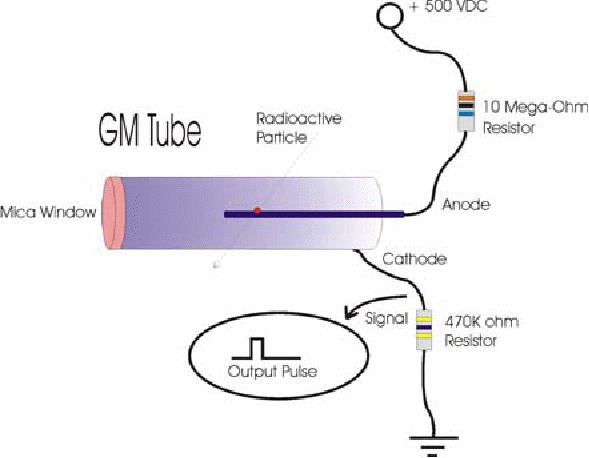The wall of the GM tube is a thin metal (cathode) cylinder surrounding a center electrode (anode). The front of the tube is a thin Mica window, which allows the passage and detection of the weak penetrating alpha particles. The GM tube is first evacuated then filled with Neon, Argon and Halogen gases.

Our GM tube is put into an initial state (ready to detect a radioactive particle), by applying a 500-volt potential to the anode through a ten mega ohm current limiting resistor. A 470K-ohm resistor is connected to the metal wall cathode of the tube and to ground. The top of the 470K resistor is where we see our pulse signal whenever a radioactive particle is detected.
In this initial state the GM tube has a very high resistance. However, when a radioactive particle passes through the GM tube, it ionizes the gas molecules in its path and creates a current pulse. This is analogous to the vapour trail left in a cloud chamber by a particle. In the GM tube, the electron liberated from the atom by the particle, and the positive ionized atom both move rapidly towards the high potential electrodes of the GM tube. In doing so they collide with and ionize other gas atoms, creating a momentary avalanche of ionized gas molecules. These ionized molecules create a small pulse of electric current allowing us to detect the particle.